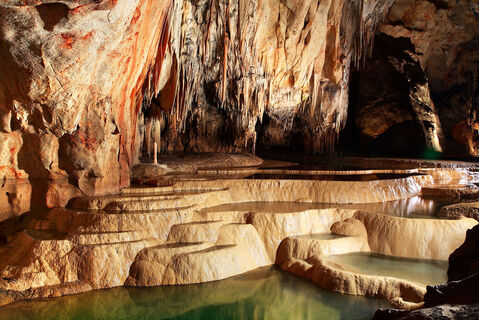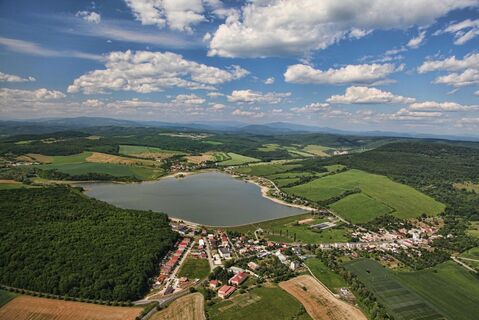Vodný svet – Kúpele Číž

Vonkajší bazénový komplex Vodný svet je vybudovaný v bezprostrednej blízkosti kúpeľného hotela Rimava pri Prírodných jódových kúpeľoch Číž, ktoré sa nachádzajú v okrese Rimavská Sobota neďaleko hraníc s Maďarskom.
In the south of Slovakia not far away from the frontier with Hungary lies what is perhaps the best known settlement of southern Gemer. It is Číž. In the past it was a small farming village but the discovery of mineral springs changed its character.
Iodide-bromine spa of national importance was opened here in 1889. It is indicated for the patients affected by nervous, skin and other chronic inflammatory diseases.
The spa buildings are from the end of the 19th century and their style imitates that of the Swiss spa architecture.
Thanks to the local highly mineralised medicinal water the diseases of locomotion andcirculatory apparatuses are successfully treated here.
A basic overview of operators and treated indications can be obtained also after clicking on “Overview of Slovak natural spa health resorts with indications” in the Related Links section.
We will prepare a tailor-made offer within 24 hours on weekdays from 8AM to 16PM.







| Monday – Sunday | Closed |
|---|







This cave also referred to as the “Pride of the Region Gemer“, lies in the south-western part of the Slovenský kras karst on the Silická planina plateau. As a special experience the Domica cave offers to its visitors an attractive boat trip on its underground river. Thanks to its significance and unique ornamentation, it was included into the UNESCO World Heritage List.
The water reservoir with the warmest water in Slovakia is that of Teplý vrch constructed on the river Blh between villages Teplý vrch, Budikovany and Drienčany. It is not far away from the town Rimavská Sobota.
Situated in Číž, 49 km from Egerszalók, Hotel Rimava features a seasonal outdoor pool and views of the pool. There is a restaurant and guests can have fun at the bowling alley. Free private parking is available on site. Each room has a TV. Certain units have a seating area for your convenience. All rooms are equipped with a private bathroom. For your comfort, you will find free toiletries and a hairdryer. You can play tennis, table tennis, and billiards at the hotel. Miskolctapolca is 44 km from Hotel Rimava, while Eger is 46 km from the property. Kosice Airport is 81 km away.
Located in the centre of Rimavská Sobota, Hotel Zlatý Býk houses a café, a restaurant serving local specialities and a terrace with barbecue facilities. The front desk is available for 24 hours per day.
Featuring free WiFi and a restaurant, Euromotel offers accommodation in Rimavská Sobota. Guests can enjoy the on-site restaurant. Free private parking is available on site.
Located at the gate to the Slovenský kras National park, the Penzión Skalná ruža - Kövirózsa panzió offers free WiFi, a terrace and barbecue facilities. (Source: www.booking.com)
Vonkajší bazénový komplex Vodný svet je vybudovaný v bezprostrednej blízkosti kúpeľného hotela Rimava pri Prírodných jódových kúpeľoch Číž, ktoré sa nachádzajú v okrese Rimavská Sobota neďaleko hraníc s Maďarskom.
The museum, which was set up in 1882, focuses primarily on the Gemer-Malohont historical region. Since 1996, it has also been documenting the culture of the Roma in, but not only, the Gemer-Malohont region.

